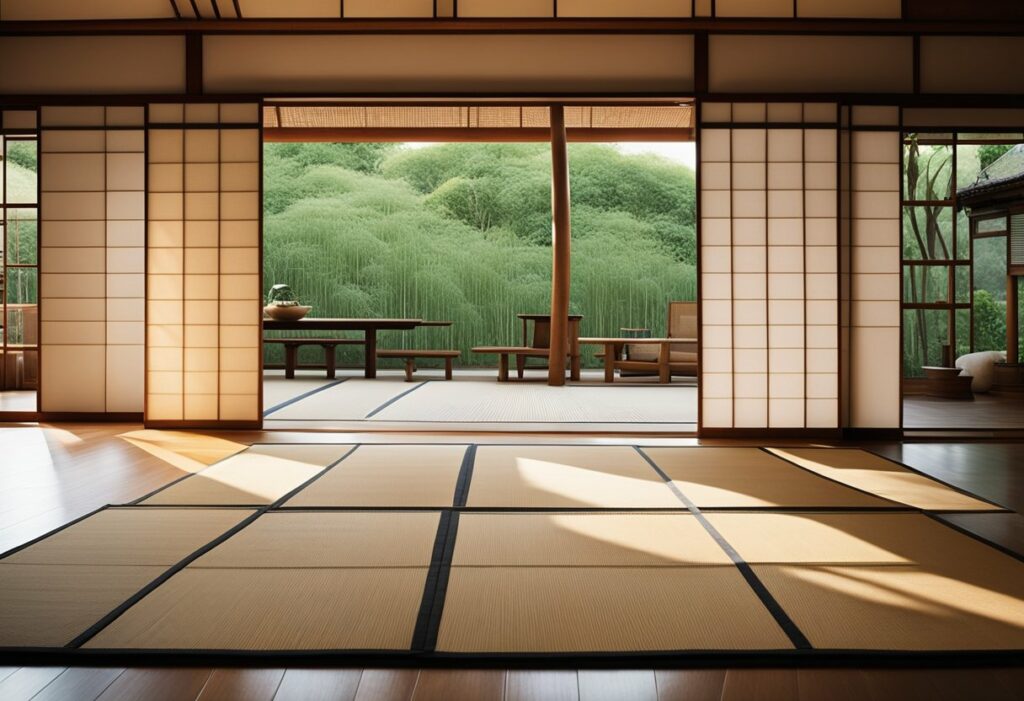Japanese Wood Interior Design: Bringing Nature Inside Your Home
Japanese wood interior design is a beautiful and timeless aesthetic that has been popular for centuries. It is known for its simplicity, elegance, and use of natural materials. The Japanese aesthetic is all about creating a sense of calm and tranquillity, and this is reflected in the design of their homes.
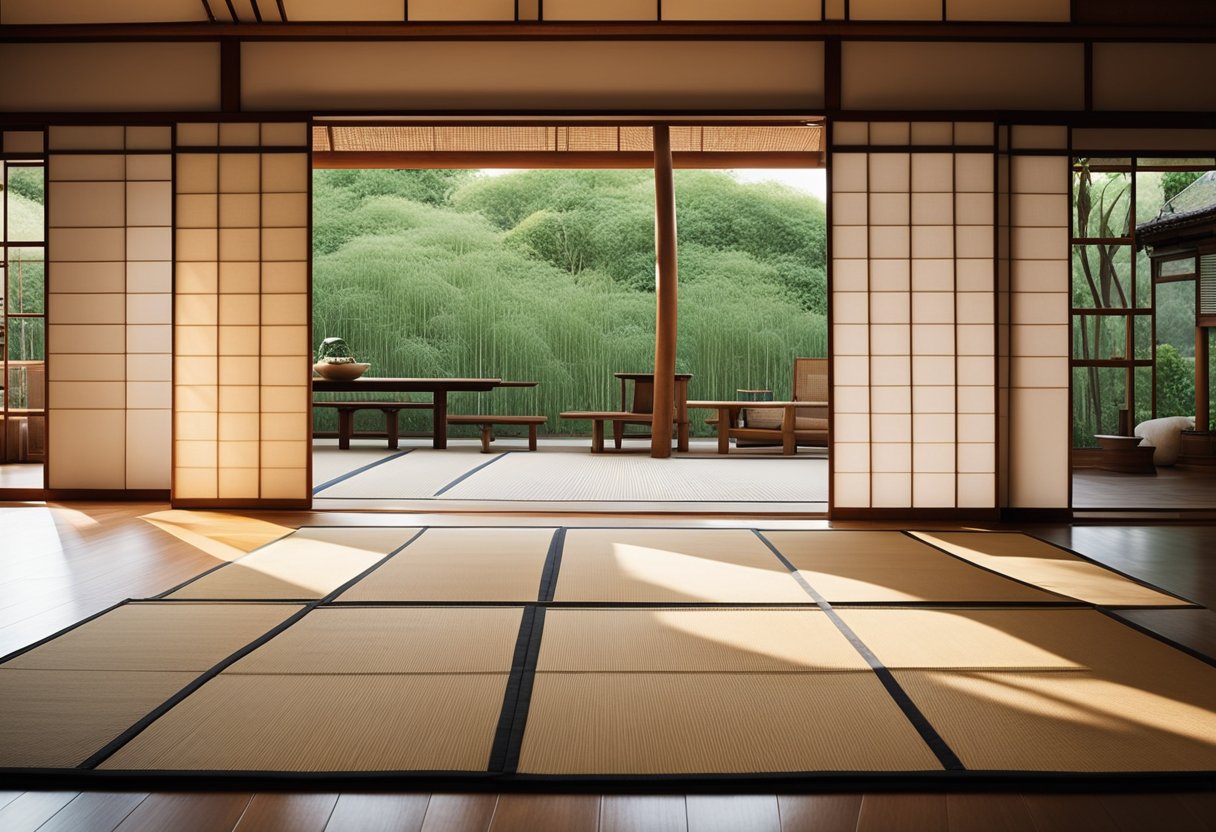
The use of wood is a fundamental aspect of Japanese interior design. Wood is a natural and sustainable material that is abundant in Japan, and it is used extensively in their homes. The Japanese believe that wood has a soul and that it can bring warmth and life to a space. They use a variety of woods, including cedar, cypress, and bamboo, which are all known for their durability and beauty.
Integrating Japandi: A Blend of Japanese and Scandinavian Designs has become increasingly popular in recent years. Japandi is a fusion of Japanese and Scandinavian design, and it combines the simplicity and minimalism of Japanese design with the functionality and practicality of Scandinavian design. This blend creates a unique aesthetic that is both calming and functional.
Key Takeaways
- Japanese wood interior design is characterised by simplicity, elegance, and the use of natural materials, particularly wood.
- Wood is a fundamental aspect of Japanese interior design, and it is believed to have a soul that brings warmth and life to a space.
- Japandi is a fusion of Japanese and Scandinavian design, and it combines the simplicity and minimalism of Japanese design with the functionality and practicality of Scandinavian design.
Fundamentals of Japanese Wood Interior Design
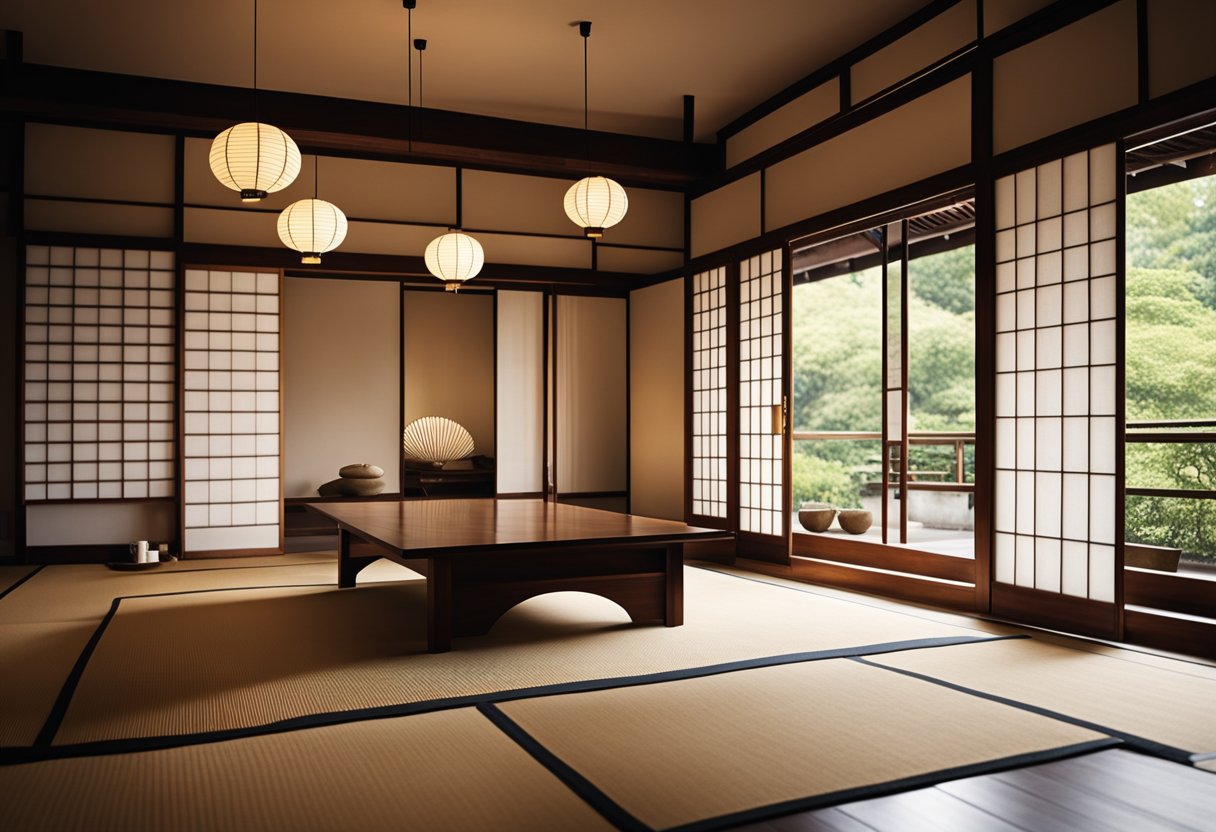
If you’re looking to create a calming and serene atmosphere in your home, Japanese wood interior design is a great choice. This style is characterised by its simplicity, minimalism, and use of natural materials. In this section, we’ll explore the key elements of Japanese wood interior design and how you can incorporate them into your own home.
Influence of Nature and Minimalism
Japanese wood interior design is heavily influenced by nature and minimalism. The use of natural materials, such as wood and stone, is a key feature of this style. Natural light is also important, with many Japanese homes featuring large windows and skylights to let in as much light as possible.
Key Elements of Design
Clean lines, simplicity, and minimalism are at the heart of Japanese wood interior design. Rooms are often sparsely furnished, with a focus on functionality and practicality. Shoji screens and sliding doors are used to divide spaces, while washi paper is often used for windows and room dividers.
Cultural Significance and Craftsmanship
Japanese wood interior design is deeply rooted in Japanese culture and craftsmanship. Wabi-sabi, the art of finding beauty in imperfection, is a key element of this style. Handmade wooden furniture is often used, with a focus on quality and craftsmanship.
Incorporating Traditional and Modern Aspects
Japanese wood interior design can be both traditional and modern. Traditional elements, such as shoji screens and sliding doors, can be combined with modern design elements, such as glass and clean lines. Japandi style, a combination of Japanese and Scandinavian design, is becoming increasingly popular and is a great way to incorporate both traditional and modern aspects into your home.
Furniture and Functional Spaces
In Japanese wood interior design, furniture is often minimal and functional. Built-in wooden furniture is common, with a focus on storage and practicality. Kitchen design is also important, with a focus on functionality and simplicity.
Overall, Japanese wood interior design is a great choice if you’re looking to create a calming and serene atmosphere in your home. By incorporating natural materials, clean lines, and a focus on functionality, you can create a space that is both beautiful and practical.
Integrating Japandi: A Blend of Japanese and Scandinavian Designs
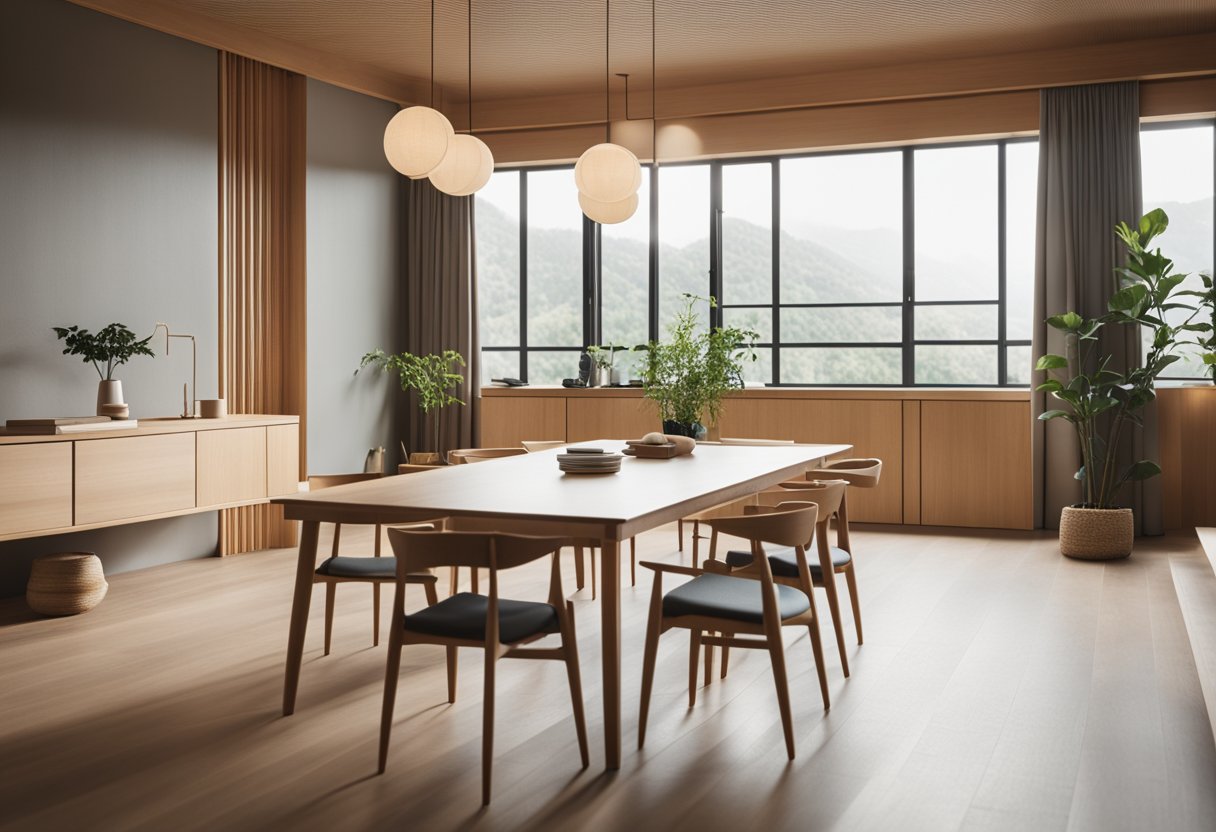
Japandi style is a popular interior design trend that blends Japanese and Scandinavian aesthetics to create a harmonious and calming space. This design style is characterised by minimalism, simplicity, and a neutral colour palette, with an emphasis on natural materials and organic shapes.
Understanding Japandi Aesthetics
Japandi style is a combination of Japanese and Scandinavian design philosophies that share a similar approach to minimalism, functionality, and craftsmanship. The Japanese aesthetic is known for its focus on simplicity, harmony, and the connection to nature, while the Scandinavian design is characterised by understated elegance, symmetry, and proportion.
Materials and Colour Palette
Natural materials such as wood, bamboo, and stone are essential elements of Japandi style. The use of these materials creates a warm and inviting atmosphere that is both calming and relaxing. The neutral colour palette of Japandi style is also an essential aspect of this design philosophy. The use of neutral colours such as white, grey, and beige creates a serene and calming environment that is perfect for relaxation.
Creating a Cohesive Space
Creating a cohesive space in Japandi style involves using a minimalistic approach to design. The use of organic shapes and natural materials creates a sense of balance and harmony in the space. Large windows are also a key feature of Japandi style. They allow natural light to enter the space, creating a sense of openness and tranquillity.
Sustainability and Ethos
Sustainability is an essential aspect of Japandi style. The use of natural materials and a neutral colour palette creates a connection to nature and promotes sustainability. The design philosophy of Japandi style also embraces imperfection and the concept of wabi-sabi, which emphasises the beauty of imperfection and the natural cycle of life.
In summary, Japandi style is a design philosophy that combines the best of Japanese and Scandinavian design. It is characterised by minimalism, natural materials, and a neutral colour palette that creates a serene and calming environment. By embracing sustainability and imperfection, Japandi style promotes a connection to nature and a sense of harmony and balance in the space.
Frequently Asked Questions
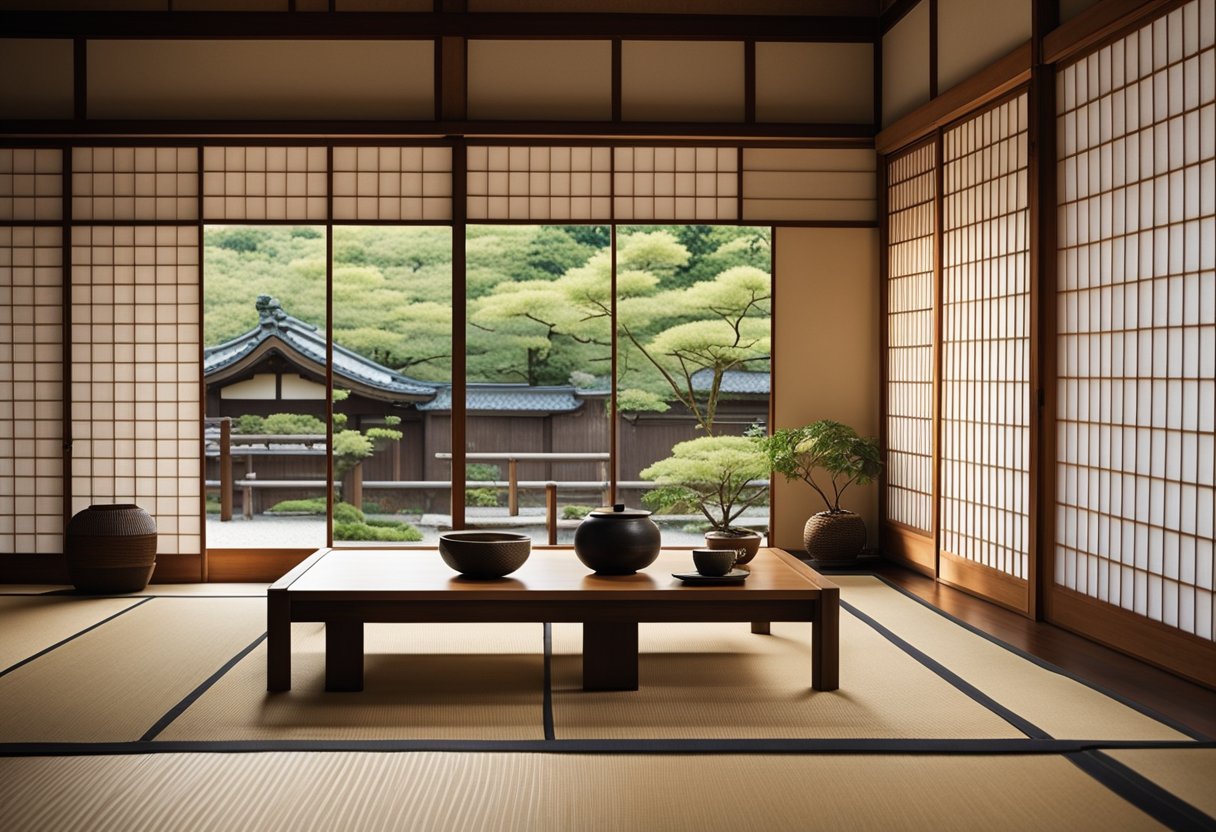
How can I incorporate the beauty of Japanese wood into my modern living space?
Incorporating Japanese wood into your modern living space is a great way to bring a touch of warmth and elegance to your home. You can start by adding wooden furniture pieces such as a low table, a wooden bench, or a wooden chair. You can also use wooden flooring or wooden wall panels to create a warm and inviting atmosphere.
What are the essential elements of a Japanese-themed wood interior design?
The essential elements of a Japanese-themed wood interior design are simplicity, natural materials, and minimalism. Japanese wood interior design is all about creating a harmonious and peaceful environment that is free from clutter and distractions.
In what ways can wood be utilised to enhance the exterior of a home with a Japanese aesthetic?
Wood can be utilised in many ways to enhance the exterior of a home with a Japanese aesthetic. You can use wooden slats for fencing, wooden decking for outdoor living spaces, and wooden screens to provide privacy and shade. You can also use wooden planters to create a natural and organic feel.
What are the hallmarks of a traditional Japanese wooden house interior?
The hallmarks of a traditional Japanese wooden house interior are simplicity, natural materials, and functionality. Japanese wooden houses are designed to be practical and efficient, with sliding doors and screens that allow for flexible use of space. The use of natural materials such as wood, paper, and bamboo is also a common feature of traditional Japanese wooden houses.
How does Japanese minimalism influence wood-centric interior design?
Japanese minimalism is a key influence on wood-centric interior design. Minimalism is all about reducing clutter and focusing on the essential elements of a space. In the context of wood-centric interior design, this means using natural materials such as wood and stone to create a simple and elegant environment that is free from distractions.
What are the best types of timber for creating an authentic Japanese interior atmosphere?
The best types of timber for creating an authentic Japanese interior atmosphere are Hinoki, Cedar, and Cypress. Hinoki is a type of cypress that is prized for its fragrance and durability. Cedar is a softwood that is commonly used for exterior cladding and roofing. Cypress is a hardwood that is often used for interior flooring and wall panelling.

